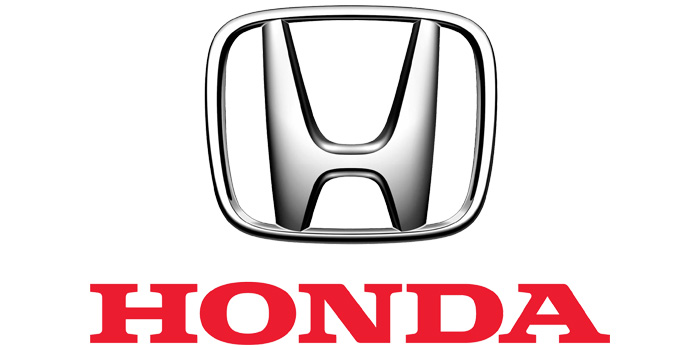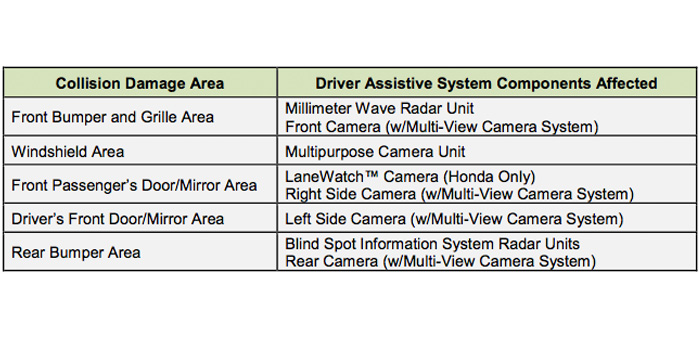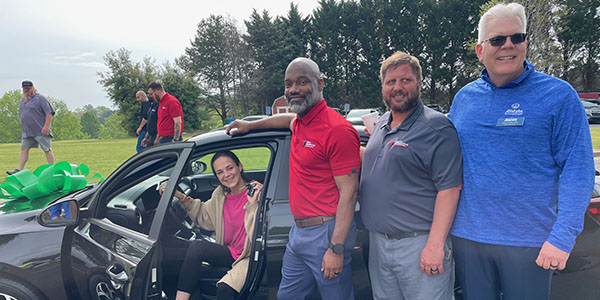American Honda has released a statement stating that it is their position that all vehicles involved in a collision (defined as damage that exceeds minor outer panel cosmetic distortion) must have the following minimum diagnostic scans, inspections and/or calibrations done to avoid improper repair:
- A preliminary diagnostic scan during the repair estimation phase to determine what Diagnostic Trouble Codes (DTCs) may be present, so proper repairs may be included. See Background On Scan Requirements paragraph for more information.
- A post repair diagnostic scan to confirm that no DTCs remain – 1. Any repair that requires disconnection of electrical components in order to perform the repair will require a post-repair diagnostic scan to confirm if the component is reconnected properly and functioning; 2. Damage that requires body parts replacement will always require a post-repair diagnostic scan.
- Some safety and driver assistive systems will require inspections, calibration and/or aiming after collision or other body repairs.
Background on Scan Requirements
Honda and Acura vehicles include numerous electronic control systems, including those that operate safety and driver assist systems. Most of these systems include onboard self-diagnostics that monitor the state of health and/or rationality of input and output circuits. When monitored circuit values fall outside predetermined thresholds, DTCs may be set in one or more electronic control unit (ECU).
The mechanical forces encountered in a collision can damage electrical circuits and components in ways that are not easily diagnosed with visual inspection methods. Here are some other electronic control system self-diagnostic facts:
- The proliferation of electronic control systems has increased the number of potential DTCs beyond the point where a dashboard indicator can be installed and/or illuminated for every DTC. Dashboard indicators are intended for driver notification, not vehicle diagnostics.
- Therefore, the presence or absence of dashboard indicators/warning lights is not an acceptable method to determine if post collision diagnostic scans are necessary.
- Many DTCs do not illuminate any dashboard indicators, but an electronic control system may still operate improperly or be completely inoperative.
- Because of the complexities of serial data networking, dashboard indicators that do illuminate may appear unrelated to the actual vehicle problem.
- Some self-diagnostics require multiple failures, or other criteria such as a number of drive cycles, to be met before illuminating any indicators.
- Low battery voltage and/or repair procedures may inadvertently set multiple DTCs. Clear the DTCs and determine which ones reset after battery voltage is stabilized.
Diagnostic Recommendations
The recommended way to accurately determine the post-collision status of all Honda and Acura vehicle electronic control systems is with the i-HDS.
- The i-HDS has an “All DTC Check” feature that will scan available electronic control systems for DTCs in one operation.
- American Honda does not test other scan tools and cannot comment on their capabilities or accuracy.
NOTE: Not all electronic control systems can be scanned using the i-HDS. For example, Honda LaneWatch and earlier model air conditioning and climate control systems have self-contained diagnostics that are not accessible using the i-HDS. For systems such as these, refer to the published diagnostic procedures in the appropriate service information available on the Honda Independent Repair/ServiceExpress website: techinfo.honda.com.
Inspection/Calibration/Aiming Requirements
Safety and driver-assistive systems that will require inspections, calibration, and/or aiming after collision or other body repairs include, but are not limited to the following:
After reconnecting the 12-volt battery:
After collision repairs are complete and the battery is reconnected, some electrical systems may not operate properly. These may include, but are not limited to the following:
- Navigation systems
- Engine idle speed learn
- Power window, power tailgate, moonroof, power sliding door position and/or pinch detection
- Keyless access and immobilizer/security systems
Since the reset procedures vary by vehicle and system, enter the vehicle information into ServiceExpress and search the keyword “Reset.” This search will retrieve a list of reset procedures required after parts replacement and/or a battery disconnect. Some reset procedures can be done without special tools. Others may require scan tool software.
Front passenger’s seat weight sensor – Inspections and calibration:
These sensors control passenger’s front airbag operation and the PASSENGER AIRBAG OFF indicator based on the occupant’s weight. Like any scale, weight sensors are a precision device.
- The service information may refer to these sensors as the seat weight sensor (SWS) system or occupant detection system (ODS) depending on model and year.
- This inspection requires a scan tool to fully check the seat weight sensor’s operation using the following criteria: 1. Empty front passenger seat weight to confirm the sensors can detect this condition; 2. Seat weight with a known calibration weight amount if necessary
- This check must be done after any collision, regardless of damage even if no airbags deployed.
- The check confirms sensor operation and that no binding or damage exists in the relationship between the seat frame, weight sensors and floor plan.
- Weight sensor calibration is also required when front passenger seat components have been removed or replaced. Refer to the service information for procedures.
Driver assistive system aiming:
Some models use one or more of the following camera and/or radar-based driver support systems that require software-based aiming and/or calibration to ensure proper operation after certain components have been removed and/or replaced:
- Adaptive Cruise Control (ACC)
- Collision Mitigation Braking System (CMBSTM)
- Forward Collision Warning (FCW)
- Lane Departure Warning (LDW)
- Lane Keeping Assist System (LKAS)
- Road Departure Mitigation (RDM)
- Blind Spot Information (BSI)
- LaneWatch (Honda Only)
- Multi-View Camera System (MVCS – Acura Only)
NOTE: Rearview (backup) cameras do not require any aiming procedures after removal or replacement unless the vehicle is also equipped with the Multi-View Camera System (MVCS).
These procedures may require special tools and/or the i-HDS to complete. Refer to the service information for specific information.
The chart below shows damage areas where driver assistive system components may be located in close proximity. Collision damage in these areas should be given particular attention because certain repairs and/or parts replacement may require aiming procedures to be done.
How to Obtain Service Information, i-HDS Dignostic Software and Interface Hardware
i-HDS software, as well as other service information, is available to independent repair facilities and others for use on laptop or desktop computer hardware. These may be purchased in three time intervals: one day, 30 days and 365 days. NOTE: The i-HDS software requires the use of a Bosch MVCI or Denso DST-i vehicle communications interface (VCI) device between the vehicle and your computer, which must be purchased separately.
To purchase i-HDS diagnostic software and/or a vehicle interface device, do the following:
1. Access the Honda Independent Repair/ServiceExpress website: techinfo.honda.com.
2. Click the link under the “Diagnostic Tools” heading (near middle of page).
3. Confirm your computer meets the system requirements and/or purchase a VCI device by clicking the link(s) under “Hardware.”
4. Click the link under “Software” to purchase i-HDS software and follow the directions.















